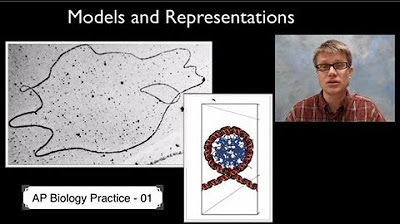Practice 2 - Developing and Using Models
Summary
TLDRIn this educational video, Paul Andersen explores the significance of models in science and engineering. He explains how models help explain phenomena, share understanding, analyze systems, and predict performance. The video delves into various types of models, including physical, conceptual, and computer simulations, and emphasizes the importance of developing these skills from an early age. Andersen suggests starting with simple drawings and progressing to more complex simulations and design testing, ultimately aiming to refine students' modeling abilities throughout their education.
Takeaways
- 🧠 Models are crucial in science for explaining phenomena and in engineering for analyzing and simulating system performance.
- 👀 The script uses an optical illusion to demonstrate how our mental models can be deceived, emphasizing the importance of external models for shared understanding.
- 🌐 A mental model is personal, unstable, and can be incomplete, unlike physical or conceptual models which are clear, shared, and act as analogs for phenomena or designs.
- 🌌 The script illustrates different types of models including structural, behavioral, and functional, with examples like DNA structure and magnetic field lines.
- 📊 Models can be manifested in various forms such as diagrams, computer simulations, analogies, and mathematical models, each serving a distinct purpose in understanding or testing concepts.
- 🔧 In engineering, models are used to test designs through methods like crash tests and to build designs using tools like CAD software and 3D printers.
- 📚 The goal of science education is to help students develop models, starting with simple drawings and progressing to more complex simulations and design tests.
- 🎯 The script suggests a progression for model development, from basic drawings in elementary school to using simulation software and participating in design competitions in high school.
- 🏫 Early introduction to model building through drawing and simple experiments can lay a strong foundation for students' scientific and engineering understanding.
- 💡 Netlogo is highlighted as a valuable simulation software for scientific modeling, allowing students to interact with and create their own models.
- 🏁 Design competitions, such as mousetrap cars, are recommended as a hands-on way for students to test their models, integrating science and engineering principles.
Q & A
What is the primary purpose of models in science and engineering?
-In science, models are used to explain phenomena and share understanding of how the world works. In engineering, they are used to analyze systems, often through simulations or physical models to see how a design will perform.
What is the difference between a mental model and a physical or conceptual model?
-Mental models are internal, individual, and can be unstable or incomplete. Physical or conceptual models, on the other hand, are external, shared by everyone, clear, and act as analogs for phenomena or designs.
How does the optical illusion with squares A and B illustrate the concept of mental models?
-The optical illusion demonstrates how mental models can be deceived by external factors, like the shadow in the illusion, leading to incorrect assumptions about the darkness of squares A and B.
What is an example of a structural model mentioned in the script?
-An example of a structural model is the model of the structure of DNA, which helps explain how it works despite being too small to be seen directly.
How can behavioral models be represented?
-Behavioral models can be represented through simulations or physical demonstrations, such as observing ants foraging for food or testing a wing in a wind tunnel.
What is the role of diagrams in modeling as discussed in the script?
-Diagrams serve as a type of model, such as Charles Darwin's branching diagram explaining speciation, which helps visualize and explain complex phenomena.
Why are computer simulations considered a type of model?
-Computer simulations are considered models because they mimic real-world processes, like the simulation of osmosis, allowing for the study and understanding of phenomena in a controlled environment.
How do models assist in engineering design?
-Models assist in engineering design by allowing for the testing of a design's performance through crash tests or simulations, and for the building of designs using tools like CAD software or 3D printers.
What is the goal of science education regarding the development and use of models?
-The goal is to help students develop and use models by constructing drawings, representing phenomena, and using simulations and tests to refine their understanding and ability to explain and predict real-world events.
How can students be introduced to the concept of models in elementary education?
-Students can be introduced to models by drawing pictures of objects, like insects, and their parts, or by constructing drawings after observing demonstrations, such as a car on a ramp.
What is the significance of competitions like mousetrap cars in model development?
-Competitions like mousetrap cars are significant as they encourage students to build and test physical models, applying their understanding of science and engineering principles in a practical and creative way.
Outlines

此内容仅限付费用户访问。 请升级后访问。
立即升级Mindmap

此内容仅限付费用户访问。 请升级后访问。
立即升级Keywords

此内容仅限付费用户访问。 请升级后访问。
立即升级Highlights

此内容仅限付费用户访问。 请升级后访问。
立即升级Transcripts

此内容仅限付费用户访问。 请升级后访问。
立即升级5.0 / 5 (0 votes)






